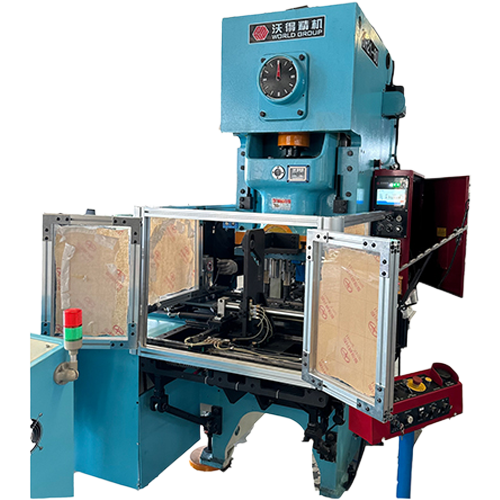What is the function of the pneumatic system of the pneumatic four-wheel tank mouth sealing machine?
Pneumatic systems play a vital role in the operation of pneumatic four-wheel sealing machines, providing the necessary power and control for the sealing process. The pneumatic system consists of various pneumatic components such as cylinders, valves and actuators, which enable the machine to complete sealing operations efficiently and reliably.
Power supply: The primary function of the pneumatic system is to generate the power required to operate the sealing machine. The pneumatic system uses compressed air as the power source, which is stored in compressed air tanks or provided by external air compressors. Compressed air is then delivered to different pneumatic components of the machine, such as cylinders and actuators, to drive its movement and apply forces as needed for the sealing process.
Drive of the sealing head: A key function of the pneumatic system is to drive the sealing rings, which are responsible for sealing the jars. The sealing ring is usually formed by multiple sets of rollers or wheels arranged in a specific configuration to press and seal the can lid to the can body. A pneumatic cylinder or actuator applies the necessary force to bring the seal into contact with the can and can lid, ensuring a tight and secure seal.
Control of sealing pressure and time: The pneumatic system enables precise control of sealing pressure and time, ensuring that the seal of each tank reaches a consistent and high-quality standard. By adjusting the air pressure supplied to the pneumatic cylinder or actuator, the operator can adjust the amount of force applied during the sealing process. In addition, pneumatic valves and control circuits control the timing of the sealing operation so that the action of the sealing head is coordinated with the time it takes for the can to reach the sealing station.
Adjustment of sealing parameters: Pneumatic four-wheel canning machines usually have adjustable sealing parameters to accommodate different tank sizes, lid types and sealing requirements. The pneumatic system enables the operator to easily adjust parameters such as seal pressure, speed and stroke length to optimize the sealing process according to specific production needs.
Safety Interlocks and Emergency Stop Devices: Pneumatic systems also have another important function, which is to achieve safety features such as interlock and emergency stop mechanisms. Pneumatic valves and actuators control the activation of the safety device to ensure the safe and reliable operation of the sealing machine. In the event of an emergency or malfunction, the operator may initiate an emergency stop procedure to stop the machine from operating, thereby avoiding potential danger or damage.
Energy efficiency and cost savings: Pneumatic systems are distinguished by their excellent energy efficiency and cost-effectiveness compared to hydraulic or electric systems. By using compressed air as the power source, pneumatic four-wheel sealing machines can achieve high power and high performance while significantly reducing energy consumption. Furthermore, pneumatic components are generally more economical and easier to maintain than hydraulic or electric components, resulting in a reduction in the overall operating cost of the machine.
Recommended Products


 EN
EN
 中文简体
中文简体 English
English













